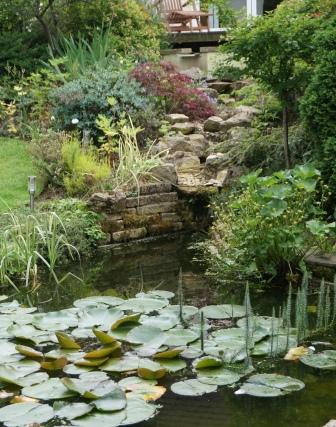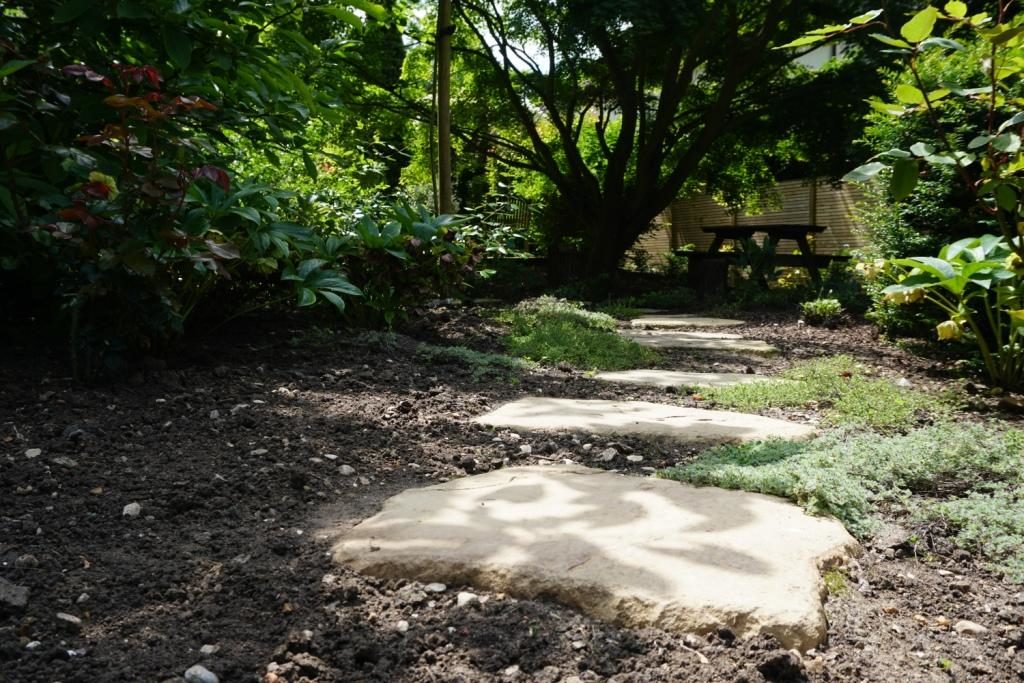 My friend Emma recently gave me a book about authors’ gardens. It is a beautiful publication that celebrates the gardens of great writers including Agatha Christie, John Ruskin, Beatrix Potter, Virginia Woolf and Rupert Brooke. She joked in her note to me that perhaps one day my garden would make it into such a book. Um, no. At least, not anytime soon. But it did get me thinking about my garden and the role it plays in my life.
My friend Emma recently gave me a book about authors’ gardens. It is a beautiful publication that celebrates the gardens of great writers including Agatha Christie, John Ruskin, Beatrix Potter, Virginia Woolf and Rupert Brooke. She joked in her note to me that perhaps one day my garden would make it into such a book. Um, no. At least, not anytime soon. But it did get me thinking about my garden and the role it plays in my life.

I have always enjoyed the garden but for the first dozen years we lived in Oxford it was simply an additional space to the house for the boys to play in. As they grew older and the call for sandpits, tree houses, go-kart tracks and slippy slides receded, we began to look at doing something more structural with our outside space. First came a pond. After all, who can resist a water feature? Then a second pond, higher up the rockery, and a stream to link them. There is something timeless and beautiful about running water – always calming and refreshing. The pond has been a source of endless delight and fascination. It is populated by newts, frogs, beetles, snails and endless flights of damsel and dragon flies as well as the occasional Border terrier who splashes about to cool down on a hot summer’s day.

We became more ambitious and by 2016 a major project to refurbish the bottom half of the garden was underway. Chris stood in the middle of the lawn with a glass of Prosecco and waved his arms around: ‘I want a big round lawn, a wall, raised vegetable beds and colour all summer.’ He announced. His dream was realised by a brilliant Venezuelan garden creator called Aristides Escallonia. What a name and what a talented young man. I have spent the last two seasons learning the hard way how to grow vegetables, fruit and salad while Chris worked out how to mow a round lawn with a lawn mower that wants only to go in a straight line.



Why am I telling you about this when I usually talk about writing? Well, it occurred to me this last week, as we were preparing to open the garden for the National Gardens Scheme (an organisation that raises nearly £1 million a year for charity), that my garden is a lot like one of my books. It has structure, chapters, anecdotes and detail. In fact, as I start my next book, I am thinking about it in the way I am planning the next development in our garden: creatively but within the scope of what is factual, or in the case of the garden, possible.

A book needs some hard landscaping to work. An overall structure is vital otherwise the reader will just wander aimlessly around wondering what this is all about. The same applies to the garden. There is something magical about moving from one space to another or from one chapter to the next. From the outset of any book I have a clear idea of the scope and its shape but the detail develops as I go along. In most cases my books are limited by the war years but this new book is larger in timescale because it is a biography. The focus will be the years 1940 to 1960 but it will dip into the late nineteenth century at one end and refer to the early twenty-first century at the other.

Now that I have the structure in my head – I never commit it to paper for some odd reason – I can work on the contents. If I think of the historical dates as solid forms like trees then the events that occur in the book and which affect my characters are the shrubs and roses. Oh yes, I have to mention roses. They are my absolute favourite flower and I have dozens in the garden: climbers, ramblers, shrub and tea-roses. They are white, pink, red, orange and yellow. Each is a beauty and has a special place in my heart. I know who gave it to me or where I bought it, when I planted it, how often I have pruned it and how many times it flowers in a season. My characters develop like roses to some extent and I like to think that I come to love or at least admire them, as much as I do my roses, when I write about them. Would it be too far-fetched to imagine Cecil Beaton as a splendid Danse du Feu? or Audrey Withers as Zephirine Drouhin? Who knows? And does it matter? It is my metaphor after all.

Perennials are minor characters but they are essential in any narrative or good border. I have a strong affection for dahlias, lupins and hydrangeas – not the bosomy type but the panticulata varieties. Peonies also feature in luxuriant shades of white, pink and deep red-purple in my borders and these will also appear in the book. They are the surprise players who add greatly to the narrative but need propping up by the structure of the story. In Our Uninvited Guests one of my best surprises was the French agent Pierre Delaye. He occupies just two pages in the chapter about the Free French but he was a stand-out fascinating man and I enormously enjoyed weaving his story into the main narrative.
And finally there are the annuals. It is always tempting, especially before open gardens, to sprinkle pretty annuals around the borders to add a flash of colour. Resist, I always say to myself. Having too many characters in a book is equally to be resisted. It causes confusion and runs the risk of just becoming a list of names in the index. Over the past couple of months people have asked me why I did not include this house or that person in Our Uninvited Guests and my reply is very much the same as when someone asks me why I don’t plant azaleas or camellias – they don’t work in the context. In the case of the plants it is because we don’t have acid soil. In the case of the book it is usually because Bletchley Park (the most requested) has been done to death and in fact no one actually lived in Bletchley Park, they just worked in the huts, or that the person in question left no records. There is always a case for leaving things out, as there is in a garden and I have come to realise that it is essential to have the courage to do that.

My passion for my garden and for writing is almost equal. Hard to say which would win in a head to head contest. Luckily I do not have to decide but if I’m honest, the garden feeds my writing but not vice versa. When I’m deep into writing a book I am wholly in the present (and the past) and my garden is then just a delicious respite from the atmosphere of my writing room. But when I am in the planning phase, as I am now, hours in the garden give me much needed mental space and band-width to let ideas pop into my head and begin to form. It is an organic process planning a book and what better place to do it than in the middle of a shrub border with mud under my finger nails, burrs in my hair and plants all around me.






